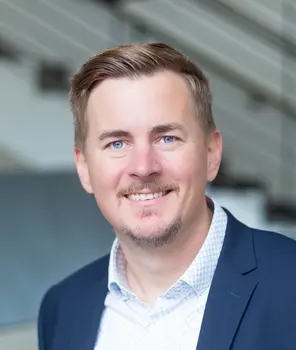Prof. Dr. Christian Ledig
Chair holder
Adress: An der Weberei 5, 96047 Bamberg
Room: WE5/04.083
phone: +49-951-863 2026 (secretary)
E-mail: christian.ledig(at)uni-bamberg.de
Consultation hour:
during lecture times:
Monday 4 p.m. to 5 p.m. in WE5/04.083 (notification via Email recommended)
outside lecture times: by appointment
Biography
Prof. Christian Ledig is a full professor at the University of Bamberg and the Chair of Explainable Machine Learning (XAI) since 2022. His focus lies on translating explainable and robust machine learning approaches into practice (especially in healthcare).
Before joining the University of Bamberg he was working in the US startup industry as Head of Artificial Intelligence at VideaHealth in Boston, MA and as a Sr Research Scientist at Imagen Technologies, Inc in Manhattan, New York. In those roles he was leading teams which built revolutionary AI-driven medical systems that can improve patient treatment.
He has over 10 years of research expertise in the fields of machine learning, computer vision and medical image analysis. His main focus lies on building FDA-regulated, AI-driven medical devices that enable better healthcare by reducing diagnostic errors and improving access to high quality medical diagnoses. Throughout his career Prof. Ledig published and contributed to 2 book chapters and more than 50 peer-reviewed research articles which were cited more than 23,000 times placing Prof. Ledig among the top 2% most highly cited researchers worldwide.
Previously, he was a Sr Computer Vision Researcher at Twitter in London, UK. There, his main research interest was the development of machine learning (deep learning) approaches for image and video super-resolution to improve the user's visual experience.
He was employed as Research Associate in the Biomedical Image Analysis (BiomedIA) group at Imperial College London, UK where he obtained a PhD degree under the supervision of Prof. Daniel Rueckert in 2015 (Thesis title: “Robust Multi-Structure Segmentation of Magnetic Resonance Brain Images” [doi]).
From 2013 to 2015 he was working part-time as a Senior Imaging Scientist for IXICO, plc, commercialising selected algorithms of his research.
In 2014, he has spent one month on a research visit in the Computational Radiology Laboratory (CRL) in the Boston Children's Hospital, Harvard Medical School, MA, USA to work on statistical methods for outlier detection. From 2015 to 2016, he was affiliated as Visiting Researcher with the University of Cambridge, UK (Department of Medicine, Division of Anaesthesia) to support the integration of automatic methods for the analysis of medical images.
In 2011 he has established the ICPC student program for competitive programming at Imperial College London. In 2016, he has coached an Imperial College Student team to the ACM ICPC world finals in Phuket, Thailand [article].
Before joining the BiomedIA group he obtained a Diploma degree in Applied Mathematics (Dipl. Univ. Technomath., equiv. MSc.) from the Friedrich-Alexander University Erlangen-Nuremberg, Germany and was interning at Siemens Corporate Research, NJ, USA as Research Intern. During this time he wrote his Diploma thesis on the “Efficient Implementation of Nonrigid Registration Methods on commodity Hardware with CUDA” [pdf].
During his studies he was working with Siemens AG (Healthcare and Industry) for several years. Prior to that he has finished a three year apprenticeship as SoftwareEngineer@BellLabs with Lucent Technologies in Nuremberg, Germany.
He is an alumni of the Siemens training program Topaz (link in German) and the Leonardo Kolleg of the University of Erlangen-Nuremberg.
He has served as reviewer for several conferences and journals such as: ACM SIGGRAPH, ACM SIGGRAPH ASIA, IEEE CVPR, IEEE ICCV, MICCAI, IEEE ISBI, IEEE Transactions on Pattern Analysis and Machine Intelligence, IEEE Transactions on Multimedia, IEEE Transactions on Medical Imaging, Medical Image Analysis, SPIE Journal of Medical Imaging, Medical Physics, NeuroImage, Scientific Reports (Nature Publishing Group), Human Brain Mapping.
